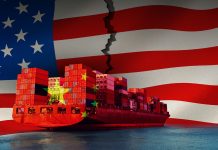Beijing has quietly turned up the heat in its technology standoff with the U.S. The latest development: a sweeping customs crackdown on Nvidia’s AI processors at China’s major ports. Once focused on a few specific “China-compliant” chips, the enforcement now stretches across all high-end semiconductors. The move signals China’s determination to reduce its dependence on imported tech while empowering its own AI chip industry. Tom’s Hardware+3Financial Times+3Business Standard+3
Targeted Chips, Broader Scope
At the centre of the crackdown are two Nvidia models: the H20 and the RTX Pro 6000D. These have been designed to comply with U.S. export restrictions—so technically legal for sale inside China—but Chinese regulators have made clear they should be phased out. Customs agents are now scrutinizing shipments of those chips more strictly, checking declarations, origins, and compliance. Financial Times+2Business Standard+2
But what started as targeted oversight has expanded. Enforcement has been widened to include all advanced semiconductor imports. Authorities are now focusing on detecting smuggling, false import declarations, and shipments that might violate export curbs. Financial Times+2Business Standard+2
Motivations: Beyond Trade, Toward Tech Sovereignty
Why is China doing this now? The crackdown reflects several overlapping pressures and goals:
-
Export Controls: Because the U.S. raised restrictions on certain AI chips, China is eager to make sure even the allowed versions don’t circumvent rules or serve as loopholes for more advanced exports. Financial Times+2Business Standard+2
-
Smuggling Concerns: Reports estimate that over USD 1 billion worth of Nvidia’s high-end chips made their way into China via illicit channels in just a few months (May-July) even as restrictions intensified. Financial Times+2Business Standard+2
-
Domestic Industry Push: Beijing has reportedly instructed major tech players—such as ByteDance and Alibaba—to stop testing or ordering Nvidia’s China-specific chips. The goal is to force a pivot toward China’s own chip manufacturers, which are now touted as nearing performance parity. Financial Times+2Benzinga+2
-
Strategic Messaging: By reinforcing import controls and customs enforcement, China sends a strong signal, both domestically and internationally, that it intends to accelerate technological self-reliance. Financial Times+1
What Customs Are Doing: Inspections, Declarations, Ports
Customs authorities have mobilized enforcement teams at major ports across China. These teams are inspecting semiconductor shipments, verifying documentation, and checking for possible smuggling or misdeclarations – especially for Nvidia models. Financial Times+2Tom’s Hardware+2
The checks are no longer limited to official, “China-safe” chips but include all advanced chips, particularly those that might be susceptible to U.S. export restrictions. Officials are reviewing past import declarations to find discrepancies. Financial Times+1
Implications & Risks
This crackdown has several immediate and long-term implications.
-
Supply Disruptions: Tech companies in China that relied on Nvidia’s “export-friendly” chips now face uncertainty. Supply chains, testing pipelines, and computational infrastructure may be disrupted. Financial Times+1
-
Gray Market Pressure: With legal channels limited, demand for smuggled or gray-market chips may rise, creating risk of quality, warranties, and security vulnerabilities. Financial Times+2Business Standard+2
-
Domestic Innovation Incentive: On the flip side, this could give a boost to China’s homegrown chipmakers. If the government supports them well, it might close the performance gap faster than many expect. Financial Times+2Benzinga+2
-
Trade & Geopolitics: The move risks intensifying trade friction between China and the U.S., particularly in the already tense area of AI, semiconductors, and export controls. It may draw retaliation or lead Washington to further tighten its rules. Financial Times+1
What Nvidia & Others Are Doing
Nvidia, for its part, appears to be adjusting expectations. Its earlier public guidance already assumed “China-zero” in some of its revenue forecasts due to export curbs. Benzinga
Chinese firms are also rethinking procurement strategies. Some tech giants are cutting back or pausing orders of flagged Nvidia chips, or modifying supply routes and documentation to avoid customs complications. Financial Times+1
Bigger Picture: Tech Decoupling Deepens
China’s crackdown reflects a broader global trend: the splitting of the world’s AI and semiconductor ecosystem along trade boundaries, export controls, and domestic policy imperatives. What was once a supply chain stretching seamlessly across North America, Asia, and beyond is being re-drawn with sharper edges. Companies are making choices about where to invest, where to manufacture, and who they trust in their tech stack. Financial Times+2FinancialContent+2
What to Watch Next
Here are key signals to monitor:
-
Official regulation updates from China’s customs and cyberspace/internet regulators—specifically notices telling firms exactly what to do or not do.
-
Domestic chip performance data—how quickly Chinese chipmakers close the gap in AI inference/compute with limited components.
-
Enforcement actions & penalties—whether companies are fined or forced to recall or destroy improperly imported chips.
-
Responses from U.S. and global actors—how Nvidia, chip distributors, and export-control authorities in Washington adjust policies.
-
Impact on AI research & deployment in China—whether slowing imports hamper AI progress or spur innovation domestically.
Conclusion
China’s customs crackdown on Nvidia AI chips is not just about controlling hardware—it’s about control of technological destiny. With stricter inspections at ports, regulatory pressure on tech giants, and an increasing pivot toward indigenously developed semiconductors, Beijing seems intent on accelerating its march toward tech self-sufficiency. For Nvidia and global chipmakers, this means operating in an increasingly fraught landscape; for China, it’s a high-stakes bet on its engineers, fabs, and ambition. The next few months will test how well Beijing can shore up domestic supply chains and whether its push for sovereignty can match pace with its AI aspirations.









































